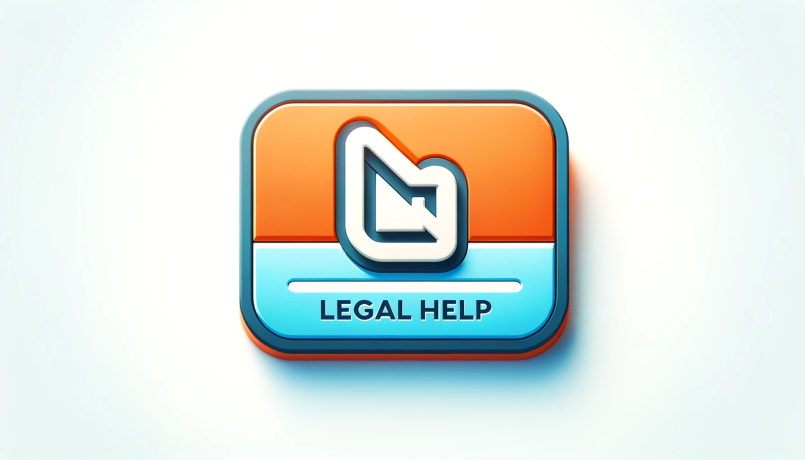
Proactively safeguard your organization by implementing strong anti-harassment policies, comprehensive employee training, and open communication channels. These strategies not only protect against legal risks but also enhance employee morale and productivity.
by LawInc Staff
May 30, 2024
In today’s litigious business environment, guarding against legal pitfalls proves paramount for safeguarding organizational wellbeing. Employment law complexities expose unwitting companies to myriad risks – costly lawsuits, damaged reputations, weakened employee morale. Proactive preventative policies and prudent practices provide invaluable protection.

Need guidance navigating employment laws and policies? Reach out to our team of expert employment law attorneys.
This guide explores core strategies top companies deploy developing legally safe workplaces. We detail complaint handling best practices, policy drafting nuances, training program priorities and more – equipping organizations with an invaluable employer’s shield.
1. Comprehensive Anti-Harassment and Non-Discrimination Policies
-
- Zero-Tolerance Stance: Unambiguously prohibit any harassment or discrimination.
- Broad Application: Cover all organizational members – employees, management, vendors etc.
- Enumerate Protected Classes: Specify groups safeguarded by policy – race, gender, age, disability and beyond.
- Definition Clarity: Provide clear harassment and discrimination definitions with concrete examples.
- Formal Complaint Process: Detail steps for reporting violations and prohibit retaliation.
Examples:
-
- Acme Inc.’s employee handbook begins with a strong anti-harassment statement applicable to all staff, temps and contractors.
- Pinnacle Co. enumerates over 20 protected characteristics in their EEOC-surpassing non-discrimination policy.
- Paragon LLC distinguishes between illegal quid pro quo and hostile work environment harassment scenarios.
- Summit Enterprises allows complaints through supervisors, HR or a confidential hotline.
- Vertex Corp. guarantees non-retaliation and fully investigates all harassment and discrimination allegations.
Action Steps:
-
- Draft a zero-tolerance anti-harassment and non-discrimination policy.
- Make policy applicable to all – employees, contractors, vendors etc.
- Define all conduct prohibited and list protected groups.
- Clarify reporting process for employees to file complaints.
- Pledge thorough, impartial investigations and prohibit retaliation.
FAQs:
-
- Are strong policies alone sufficient? No, consistent enforcement proves equally critical.
- How broad should protected classes extend? The more comprehensive the better – aim to exceed legal minimum.
- What complaint reporting options work best? Provide several channels catering to different comfort levels.
- Who should investigate complaints? Unbiased parties – typically HR and/or outside counsel.
- How address policy violations? Impose discipline proportional to severity up to termination.
2. Proactively Mitigating Risks Through Workforce Training
-
- Harassment Prevention Focus: Teaching employees to identify and deter harassing behaviors.
- Recurring Requirement: Mandating participation for all staff at onboarding and regular refreshers.
- Interactive Approach: Leveraging role-plays, Q&A and real-life scenarios over lectures.
- Leader-Specific Curriculum: Imparting advanced skills for supervisory tiers.
- Multichannel Delivery: Utilizing varied formats – live, online, video – suiting different learning styles.
Examples:
-
- All Spearhead Inc. employees complete annual 2-hour interactive harassment deterrence workshops.
- Managers at Vista Enterprises attend extra seminars on receiving complaints and conducting investigations.
- Employees role-play bystander intervention techniques halting borderline behaviors at Radiance Co.
- New supervisors at Pinnacle Inc. watch video vignettes modeling proper responses to policy violations.
- Employees pick between live and virtual attendance for Peak Corp’s quarterly discrimination awareness sessions.
Action Steps:
-
- Implement required harassment prevention training for all employees.
- Develop leader-specific modules coaching management on complaints and investigations.
- Utilize interactive instructional techniques like role-plays and Q&A.
- Deploy user-friendly content across multiple channels enhancing accessibility.
- Document completions and annually refresh materials to reflect emerging challenges.
FAQs:
-
- What training frequency and duration work best? Annually, 1-2 hours live or equivalent for maximum learning.
- Should certain roles get extra training? Yes, supervisors benefit from advanced complaint response and investigation skills.
- Who should conduct sessions? Knowledgeable HR staff or outside subject matter expert consultants.
- What training records should be kept? Track dates, agendas, attendance and evaluation scores.
- Can training help defend against claims? Yes, showing good faith educational efforts aids defense posture.
3. Aligning Company Culture and Values Around Ethics
-
- Codified Mission Statement: Clearly articulating organizational purpose and principles.
- Integrity Leadership: Managers unwaveringly modeling ethical conduct for teams.
- Values-Focused Hiring: Selecting candidates based on character alongside credentials.
- Ethical Decision-Making Guidance: Educating staff on navigating morally ambiguous scenarios.
- Open Door Accessibility: Encouraging employees to surface concerns without fear.
Examples:
-
- Integrity headlines Core Values at Pinnacle Corp which all decisions map back to.
- Executives openly share past mistakes and lessons at Vista Co. leadership training.
- Hiring managers probe candidates for examples of standing up for beliefs at Peak Enterprises.
- All Radiance LLC staff learn a 3-step ethical decision-making framework.
- Managers maintain literal open doors and host quarterly ask-me-anything forums at Spearhead Inc.
Action Steps:
-
- Develop values-centric mission statement serving as company moral compass.
- Train managers on ethical role modeling and open communication.
- Incorporate integrity assessments into candidate selection process.
- Teach staff structured moral reasoning systems for nuanced situations.
- Establish accessible channels for employees to raise concerns without repercussion.
FAQs:
-
- How make values actually drive behaviors? Consistently reference in decisions, performance, recognition.
- What if an executive lapses ethically? Address proportionately regardless of level, communicating clearly.
- Can you teach integrity? Unlikely to fundamentally change but can shape conduct through awareness.
- What to do when answers aren’t black and white? Encourage ethical reasoning, discussion, and accept grays exist.
- How convince people open door policies are genuine? Prove through responsiveness and transparently close loops.
4. Empowering Employees Through Open Communication
-
- Candid Feedback Channels: Soliciting and listening to employee input regularly.
- Policy Transparency: Making company guidelines easily accessible and understood.
- Change Communication: Explaining reasons, plans and impacts around organizational shifts.
- Cascading Information Flow: Conveying key messages consistently through leadership ranks.
- Frequent Touchpoints: Hosting department meetings, town halls, and executive sessions routinely.
Examples:
-
- Managers host weekly team huddles and take local decisions at Apex Co.
- All Vista Corp. policies are publicly posted and discussed at monthly meetings.
- Radiance LLC conducts town halls before, during and after major change initiatives.
- Information cascades uniformly from executives to frontline at Peak Enterprises.
- Pinnacle Inc. supplements annual engagement surveys with quarterly pulse checks.
Action Steps:
-
- Establish multiple employee listening posts soliciting candid comments.
- Make all policies easily findable, digestible and encourage ongoing dialogue.
- Explain organizational changes thoroughly – reasons, rollouts and results.
- Implement leadership cascade process conveying one unified message.
- Increase face-to-face communication through varied forums held frequently.
FAQs:
-
- Can you over-communicate? Unlikely if relevant and via appropriate channels per audience needs.
- What if employees abuse open door policies? Clarify appropriate uses and redirect unproductive venting.
- How transparent should companies be? Share most fully while protecting legitimate business sensitivities.
- What to do with engagement survey results? Review thoroughly, prioritize areas and take visible action.
- How ensure messages reach frontline? Cascade systematically and hold chain accountable for delivery.
5. Upholding Fair and Lawful Disciplinary Procedures
-
- Progressive Discipline: Proportionately escalating penalties from verbal warnings through termination.
- Consistent Application: Ensuring equitable treatment without undue disparities.
- Clear Expectations: Specifying conduct standards and consequences for noncompliance.
- Proper Documentation: Capturing all disciplinary discussions, agreements and actions contemporaneously.
- Due Process: Providing channels for employees to tell their side and appeal decisions.
Examples:
-
- Radiance LLC follows 4-step graduated penalties from coaching to dismissal based on severity and history.
- Apex Co. meticulously reviews outcomes across grades, departments and managers to spot disciplinary disparities.
- Pinnacle Inc. details prohibited behaviors and repercussions in code of conduct all staff certify.
- Supervisors log every corrective discussion in HR systems at Vista Corp.
- Peak Enterprises suspends rather than terminates when investigating alleged infractions allowing employee response.
Action Steps:
-
- Establish clear, progressive disciplinary procedures for different infractions.
- Monitor penalties by protected group status to safeguard equitability.
- Plainly articulate behavioral standards and outcomes for violations.
- Require supervisors document all disciplinary actions and rationales.
- Ensure due process allowing employees to challenge disciplinary measures.
FAQs:
-
- How many progressive stages are best? At least 3-4 from verbal warning through termination.
- What if an infraction warrants immediate termination? Egregious violations can skip steps but contemporaneously document justification.
- Should you get employee signature on disciplinary notices? Yes, to acknowledge receipt if not agreement with contents.
- How long retain disciplinary records? At least 2 years; 4 years for termination-related.
- How much detail to share about others’ discipline? Speak in generalities; precise details risk privacy violations.
Summary

Did You Know? Organizations that proactively implement measures to prevent harassment and discrimination can save significantly in legal fees and settlement costs annually compared to those without such measures.
In an era of heightened legal scrutiny, employers must proactively safeguard against costly workplace disputes. Comprehensive anti-harassment policies, recurrent training, strong ethical foundations, open communication and equitable discipline form a powerful shield.
By deploying the strategies and practices discussed, companies can foster a culture of integrity, respect and legal compliance. Doing so not only mitigates legal exposure but also boosts employee morale, retention and productivity – delivering competitive advantage.
Need Assistance? Contact Us
If you need guidance developing legally sound workplace policies and practices, contact us to be connected with an experienced employment law attorney. Get strategic advice and practical solutions to help your organization stay protected and focused on core business goals.
Test Your Workplace Legal Safety Knowledge
Questions: Policies and Complaint Procedures
-
-
- 1. Which statement best describes an effective harassment policy?
- A) Encourages employees to confront harassers directly
- B) Provides a single internal complaint channel
- C) Applies to some but not all employees
- D) Defines prohibited conduct and outlines multiple reporting options
- 2. How much detail should policies include around complaint investigation procedures?
- A) None – keep process entirely confidential
- B) Minimal – employees don’t need to know specifics
- C) Moderate – explain steps and timelines at high level
- D) Extensive – share intricate details of interview and evidence protocols
- 3. What protections should policies extend to harassment and discrimination complaints?
- A) Confidentiality
- B) Neutrality
- C) Non-retaliation
- D) All of the above
- 4. Which group is least appropriate to receive and investigate internal bias complaints?
- A) HR professionals
- B) In-house counsel
- C) Department heads
- D) External experts
- 5. How often should organizations update harassment policies?
- A) Monthly
- B) Annually
- C) Biennially
- D) Never – avoid inconsistency
- 1. Which statement best describes an effective harassment policy?
-
Answers: Policies and Complaint Procedures
-
- 1. D) Effective policies clearly define prohibited behaviors and provide multiple secure reporting channels.
- 2. C) Share high-level complaint procedures to build trust without compromising investigation integrity.
- 3. D) Organizations must keep complaints confidential, investigate impartially and prohibit retaliation.
- 4. C) Complaint recipients should be properly trained; department heads may appear biased.
- 5. B) Review policies annually to keep pace with legal and workplace changes.
Questions: Workplace Training and Culture
-
- 1. What is the primary goal of harassment prevention training?
- A) Avoiding legal liability
- B) Identifying and addressing misconduct
- C) Improving diversity optics
- D) Punishing problem employees
- 2. Which training technique is most effective for adult learners?
- A) Straight lecture
- B) Multimedia
- C) Interactive discussion
- D) Post-training quizzes
- 3. What is the biggest determinant of an ethically-aligned company culture?
- A) Existence of a values statement
- B) Frequency of training
- C) Leadership role modeling
- D) Employee survey scores
- 4. Which leader behavior most powerfully builds an open communication climate?
- A) Sharing organizational goals
- B) Hosting town halls
- C) Acknowledging mistakes
- D) Sending newsletters
- 5. What cultural attribute most strongly predicts good conduct and legal compliance?
- A) Aggressiveness
- B) Diversity
- C) Risk-taking
- D) Integrity
- 1. What is the primary goal of harassment prevention training?
Answers: Workplace Training and Culture
-
- 1. B) While training helps minimize legal risks, the core aim is identifying and preventing misconduct.
- 2. C) Adults learn best through interaction and application, not passive lecture or testing.
- 3. C) Leaders’ visible modeling of ethical conduct is the greatest driver of employee behavior.
- 4. C) When leaders admit errors, it powerfully signals psychological safety to raise concerns.
- 5. D) Integrity and ethics are the strongest predictors of legal compliance and good conduct.
Questions: Documentation and Discipline
-
- 1. Which scenario warrants a written warning per best practices?
- A) First offense performance issue
- B) Minor attire policy violation
- C) Repeated tardiness
- D) Customer service complaint
- 2. When should disciplinary actions be documented?
- A) Verbal warnings
- B) Written warnings
- C) Terminations
- D) All of the above
- 3. What is a key risk of insufficient disciplinary documentation?
- A) Wrongful termination claims
- B) Unemployment benefit challenges
- C) Both of the above
- D) Neither of the above
- 4. Which factor is most important in determining disciplinary fairness?
- A) Employee history
- B) Manager discretion
- C) Offense severity
- D) Treatment consistency
- 5. How long should disciplinary records be retained post-termination?
- A) 6 months
- B) 1 year
- C) 3 years
- D) 5 years
- 1. Which scenario warrants a written warning per best practices?
Answers: Documentation and Discipline
-
- 1. C) While all issues warrant feedback, written warnings are best for repeated problems.
- 2. D) Document all disciplinary actions – verbal, written, final warnings and terminations.
- 3. C) Poor disciplinary records leave companies vulnerable to both wrongful termination and unemployment claims.
- 4. D) Fairness hinges most on consistent treatment for similar offenses, not individual factors.
- 5. D) Best practice is retaining employee records, including disciplinary files, for at least 5 years post-employment.
Disclaimer
The guidelines provided in this article are for general educational purposes only and do not constitute specific legal advice. Employment laws vary by jurisdiction, so consult with qualified local counsel to address your organization’s unique needs. The authors disclaim any liability for reliance on this content. Consider this a starting point for dialog with your HR and legal partners who can tailor recommendations to your company’s risk profile, industry and size.










